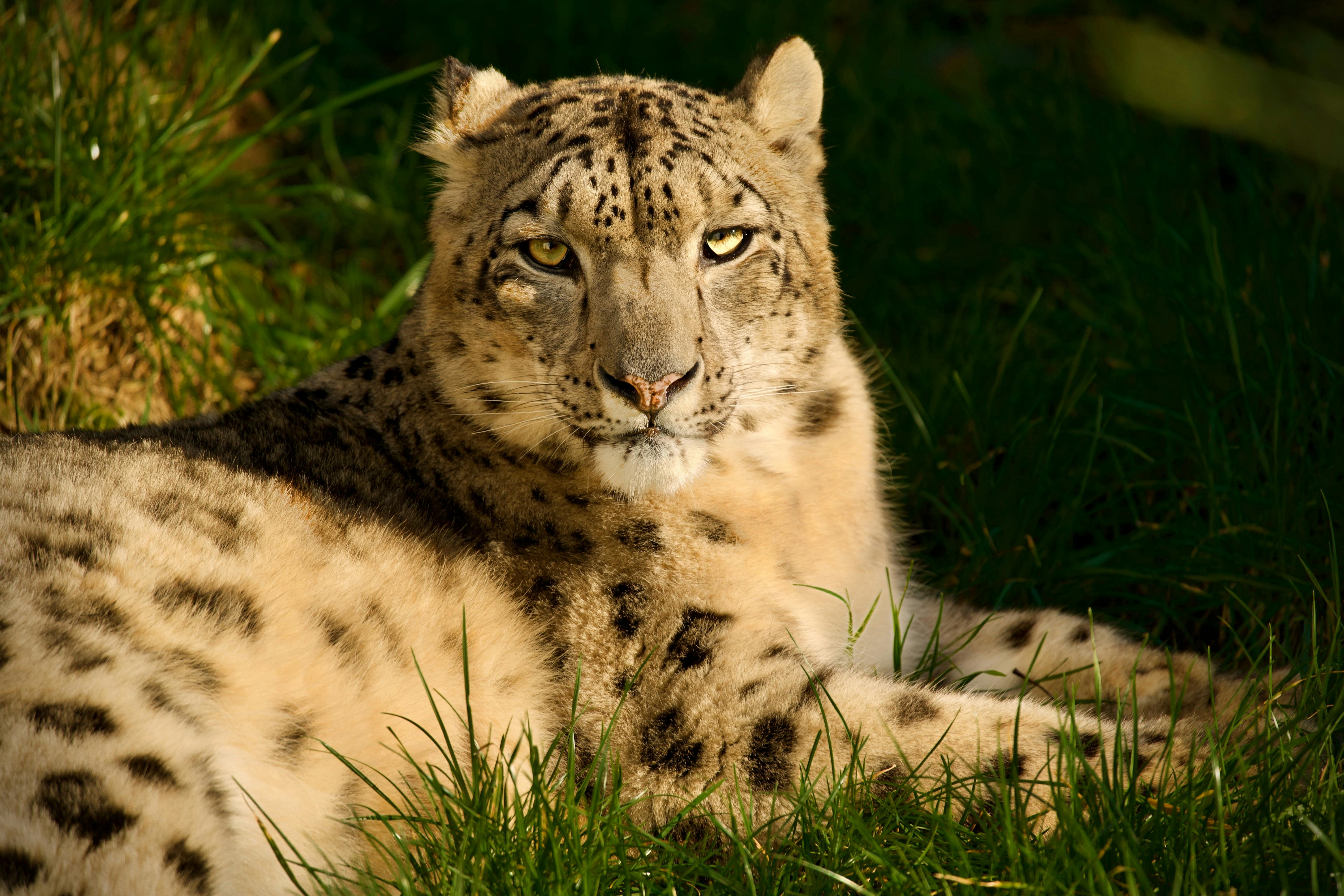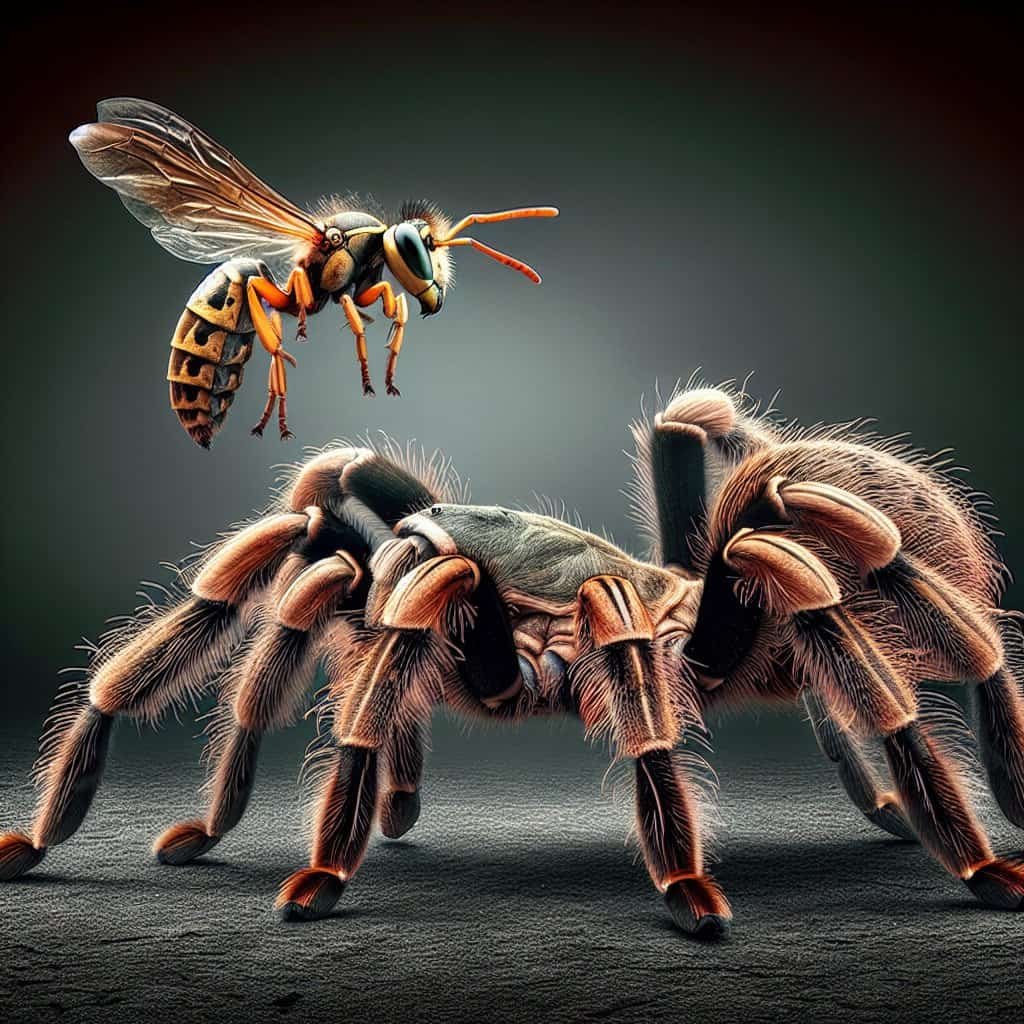Imagine a world where tiny wasps quietly subdue and manipulate gigantic spiders for their own diabolical purposes. Sounds like something out of a horror movie, right? Well, believe it or not, there may be some truth to this spine-tingling scenario. In the wild, certain species of spider wasps have evolved the most astonishing strategy to ensure the survival of their offspring – they specifically target tarantulas as hosts for their developing larvae. Curious to know more about this fascinating interplay between predator and prey? Keep reading to uncover the secrets of these enigmatic spider wasps and their unsettling relationship with their arachnid quarry.

Overview of Spider Wasps
Introduction to Spider Wasps
Spider wasps are a fascinating group of insects that belong to the family Pompilidae. These wasps are known for their unique hunting behavior, particularly their affinity for targeting spiders as prey for their larvae. With over 5,000 species worldwide, spider wasps have evolved various strategies to capture and immobilize their spider prey. In this article, we will explore the key characteristics, ecology, and behavior of spider wasps, with a specific focus on the species that target tarantulas.
Key Characteristics of Spider Wasps
Spider wasps exhibit several key characteristics that set them apart from other wasp species. One distinguishing feature is their slender and elongated body shape, often with a narrow waist. They have strong wings, allowing for speedy and agile flight. Their coloration varies greatly among species, ranging from metallic blues, vibrant oranges, to sleek blacks. Spider wasps also possess a venomous sting, which they use to paralyze their spider prey.
Ecology and Behavior of Spider Wasps
Spider wasps are predominantly solitary insects, with females taking on the primary roles of hunting and reproduction. They are known for their remarkable hunting behavior and are considered highly efficient predators. Spider wasps often exhibit a strong preference for specific habitats, such as grasslands, forests, or deserts, depending on the species. Their hunting techniques and reproductive behaviors show remarkable adaptations that have evolved over millions of years.
Tarantulas as Prey for Spider Wasps
Reasons Why Spider Wasps Target Tarantulas
Tarantulas are one of the preferred prey targets for many species of spider wasps. This preference can be attributed to several factors. Firstly, tarantulas are large and provide a substantial food source for the wasp larvae. Secondly, tarantulas are relatively slow-moving spiders, making them easy prey to detect and capture. Lastly, tarantulas have a relatively low venom potency compared to other spider species, minimizing the risk of the wasp getting injured during the hunting process.
Coevolution of Spider Wasps and Tarantulas
The relationship between spider wasps and tarantulas is an intriguing example of coevolution. Over time, spider wasps have developed various adaptations to overcome the defense mechanisms of tarantulas. These adaptations include venom that can paralyze the tarantula, specialized hunting techniques, and behavioral tactics to avoid direct confrontation with the spider’s fangs. In response, tarantulas have also evolved strategies to resist and escape from the wasp’s attacks, creating a constant evolutionary “arms race” between the two species.
Spider Wasp Hunting Techniques
Spider wasps employ a range of hunting techniques to capture their tarantula prey. One common strategy is to sting the tarantula in the soft abdominal region, injecting venom that paralyzes the spider. The wasp then drags the immobilized tarantula to a pre-dug burrow or a nest, where a single egg is laid on the spider’s body. Once the egg hatches, the wasp larva feeds on the live, paralyzed tarantula until it reaches maturity. This hunting technique ensures a constant supply of fresh food for the developing wasp larva.

Spider Wasp Species that Target Tarantulas
Pepsis spp.
Pepsis spp. is a genus of spider wasps known for their specialized hunting behavior targeting tarantulas. These wasps can be found in various parts of the world, including the Americas and Africa. Pepsis spp. are large, robust wasps with iridescent blue or green coloration. They actively search for tarantulas in their preferred habitats, often engaging in aerial pursuits to capture their prey.
Hemipepsis spp.
Hemipepsis spp. are another group of spider wasps that have evolved to target tarantulas as their primary food source. These wasps are commonly found in North and South America. Hemipepsis spp. are medium-sized wasps with varying coloration patterns, ranging from metallic blues to dark browns. They utilize their agility and speed to hunt down tarantulas, utilizing their venomous stings to paralyze their prey.
Ageniella spp.
Ageniella spp. is a genus of spider wasps that shows a strong preference for tarantulas. These wasps can be found in regions such as Central America and Africa. Ageniella spp. are small to medium-sized wasps with a variety of color patterns, including black, orange, and yellow. They rely on their excellent vision and stealthy approach to infiltrate tarantula burrows and capture their prey.
Crypsinus spp.
Crypsinus spp. are a group of spider wasps known for their specialized hunting techniques targeting tarantulas. They can be found in regions such as Australia and Southeast Asia. Crypsinus spp. have a slender body shape and often boast vibrant colorations, such as bright red or yellow. They use their agility and speed to quickly immobilize tarantulas, utilizing their venomous sting to paralyze their prey.
Anoplius spp.
Anoplius spp. is a genus of spider wasps that actively capture and prey upon tarantulas. These wasps can be found in various parts of the world, including Europe, North America, and Asia. Anoplius spp. are typically medium-sized wasps with dark colorations, allowing them to blend into their surroundings. They employ cunning hunting strategies, stalking tarantulas and utilizing their venomous sting to incapacitate their prey efficiently.
Pepsis spp.
Physical Characteristics of Pepsis spp.
Pepsis spp. are large and robust wasps, with females measuring up to 2 inches in length. They possess a characteristic slender body shape with a narrow waist, and their coloration is often iridescent, displaying shades of blue or green. Pepsis spp. have strong wings that enable them to fly quickly and maneuver with precision.
Distribution and Habitat of Pepsis spp.
Pepsis spp. can be found in various parts of the world, including the Americas and Africa. They inhabit a wide range of habitats, such as grasslands, deserts, and forests. These wasps are particularly common in areas with a diverse population of tarantulas, as they rely on capturing these spiders as their primary prey.
Life Cycle and Behavior of Pepsis spp.
Pepsis spp. follow a relatively complex life cycle, with multiple stages involving the hunting and reproduction processes. Female Pepsis wasps actively search for tarantulas, using their keen vision to locate potential prey. Once a tarantula is spotted, the female wasp initiates an aerial attack, stinging the spider and injecting venom to paralyze it. The wasp then drags the immobilized tarantula to a pre-dug burrow, where a single egg is laid on the spider’s body. The developing wasp larva feeds on the live tarantula until it matures and pupates within the safety of the burrow.

Hemipepsis spp.
Physical Characteristics of Hemipepsis spp.
Hemipepsis spp. are medium-sized wasps, with females typically measuring around 1 inch in length. They display various coloration patterns, ranging from metallic blues to dark browns. These wasps have a slender body shape, allowing them to maneuver swiftly during their hunting pursuits. Hemipepsis spp. also possess strong and agile wings, enabling them to cover large distances in search of tarantulas.
Distribution and Habitat of Hemipepsis spp.
Hemipepsis spp. are commonly found in North and South America. They inhabit a wide range of habitats, including forests, grasslands, and open meadows. These wasps prefer areas with an abundant population of tarantulas, as it ensures a readily available food source for their larvae.
Life Cycle and Behavior of Hemipepsis spp.
Similar to other spider wasps, Hemipepsis spp. follow a distinct life cycle that revolves around securing tarantulas as prey. Female wasps actively search for tarantulas, utilizing their incredible speed and agility to hunt down their preferred prey. Once a tarantula is located, the wasp stings it, injecting venom that paralyzes the spider. The immobilized tarantula is then transported to a suitable nest or burrow, where a single egg is laid on its body. The developing wasp larva consumes the live tarantula until it completes its growth and pupates.
Ageniella spp.
Physical Characteristics of Ageniella spp.
Ageniella spp. are small to medium-sized spider wasps, with females usually measuring around 0.5 to 1 inch in length. These wasps exhibit a diverse range of color patterns, including black, orange, and yellow. Ageniella spp. have a compact and robust body shape, allowing them to navigate through tight spaces, such as tarantula burrows.
Distribution and Habitat of Ageniella spp.
Ageniella spp. can be found in regions such as Central America and Africa. They inhabit a variety of habitats, including tropical rainforests and grasslands. These wasps are often associated with areas populated by tarantulas, as they specialize in infiltrating tarantula burrows to capture their prey.
Life Cycle and Behavior of Ageniella spp.
Ageniella spp. exhibit a unique hunting behavior that involves infiltrating tarantula burrows. Female wasps utilize their excellent vision and agility to approach tarantulas without alerting them. Once inside the burrow, the wasp delivers a paralyzing sting to the tarantula, rendering it immobile. Ageniella wasps then proceed to lay a single egg on the tarantula’s body. The wasp larva feeds on the incapacitated tarantula until it matures and pupates, using the tarantula’s body as a secure food source.

Crypsinus spp.
Physical Characteristics of Crypsinus spp.
Crypsinus spp. are slender-bodied spider wasps, typically measuring less than 1 inch in length. They exhibit vibrant colorations, including bright red or yellow, making them visually striking. These wasps have strong, transparent wings that facilitate their swift and agile flight.
Distribution and Habitat of Crypsinus spp.
Crypsinus spp. are primarily found in regions such as Australia and Southeast Asia. They inhabit diverse habitats, including forests, grasslands, and urban environments. These wasps are particularly abundant in areas with a high population of tarantulas, as they rely on capturing these spiders for their survival.
Life Cycle and Behavior of Crypsinus spp.
Crypsinus wasps employ rapid and efficient hunting techniques when targeting tarantulas. Female wasps use their agility and speed to immobilize tarantulas, delivering a venomous sting that paralyzes the spider. Once the tarantula is incapacitated, the wasp transports it to a safe location, such as a burrow or nest, where a single egg is laid. The wasp larva consumes the paralyzed tarantula throughout its development, ensuring a constant supply of nourishment until it undergoes pupation.
Anoplius spp.
Physical Characteristics of Anoplius spp.
Anoplius spp. are medium-sized spider wasps, typically measuring around 1 inch in length. They have a robust body shape and possess dark colorations, allowing them to blend seamlessly into their surroundings. These wasps have strong wings, providing them with excellent flight capabilities.
Distribution and Habitat of Anoplius spp.
Anoplius spp. can be found in various parts of the world, including Europe, North America, and Asia. They inhabit a diverse range of habitats, such as woodlands, meadows, and grasslands. These wasps are often associated with areas populated by tarantulas, as they have evolved specialized hunting techniques to capture and prey upon these spiders.
Life Cycle and Behavior of Anoplius spp.
Anoplius wasps employ stealthy stalking techniques when hunting tarantulas. They use their exceptional vision and agility to approach tarantulas without raising suspicion. Once the wasp reaches the tarantula, it delivers a paralyzing sting, rendering the spider immobile. Anoplius wasps then transport the tarantula to a suitable location, where a single egg is laid on the spider’s body. The wasp larva consumes the paralyzed tarantula throughout its growth, ensuring a constant supply of food until it reaches maturity.

Implications and Importance
Effects on Tarantula Population
The predation of tarantulas by spider wasps can have significant implications for the population dynamics of these spiders. Tarantula populations often experience a selective pressure due to the constant presence of spider wasps. This can result in a decrease in tarantula numbers in areas where spider wasps are abundant. However, it is important to note that tarantulas have also developed various defensive strategies to resist or evade wasp attacks, contributing to the ongoing evolutionary arms race between these two species.
Ecological Role of Spider Wasps
Spider wasps play a crucial ecological role as predators, regulating the population sizes of their spider prey. By targeting tarantulas, spider wasps help maintain a healthy balance within ecosystems. The control of spider populations prevents excessive predation on other invertebrates, maintaining the diversity and stability of the overall ecosystem.
Conservation Considerations
Given the important ecological role spider wasps play, it is essential to consider their conservation in natural habitats. Protecting the habitats where both spider wasps and tarantulas reside is critical for maintaining the delicate balance in these ecosystems. Additionally, preserving these species’ habitats can provide valuable opportunities for further research and understanding of the fascinating dynamics between spider wasps and tarantulas.
Conclusion
Spider wasps are remarkable creatures that have evolved sophisticated hunting techniques to target tarantulas as their primary prey. Their coevolutionary relationship with tarantulas showcases the ongoing evolutionary arms race between predator and prey. By understanding the key characteristics, ecology, and behaviors of spider wasps, we gain insight into the fascinating dynamics of the natural world. The implications and importance of spider wasps in regulating tarantula populations highlight the delicate balance of ecosystems and the need for conservation measures to protect these unique insects and their habitats.
